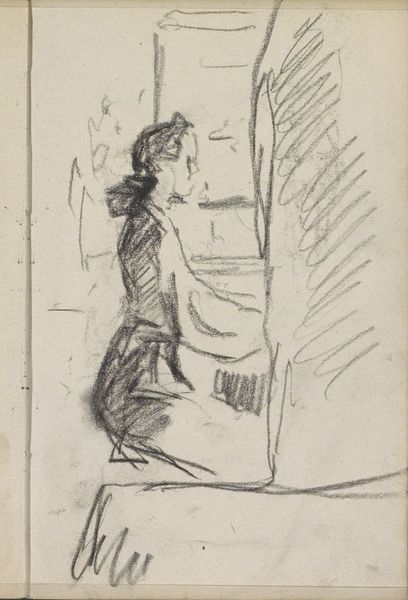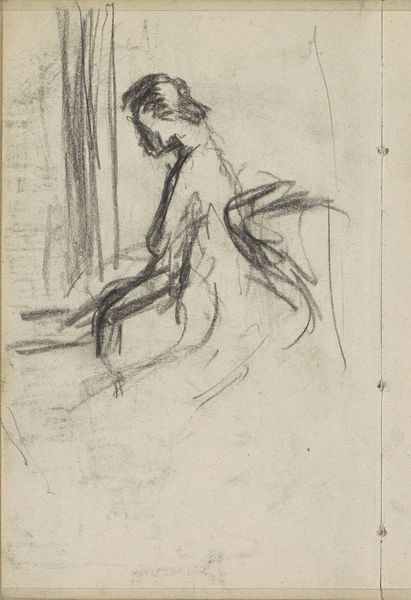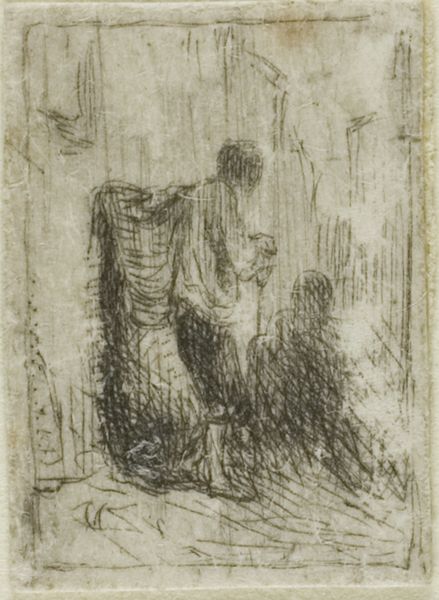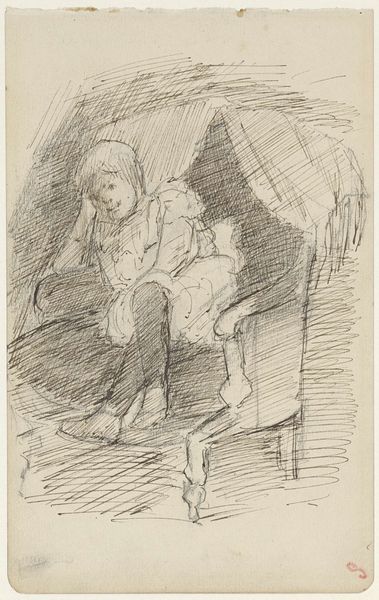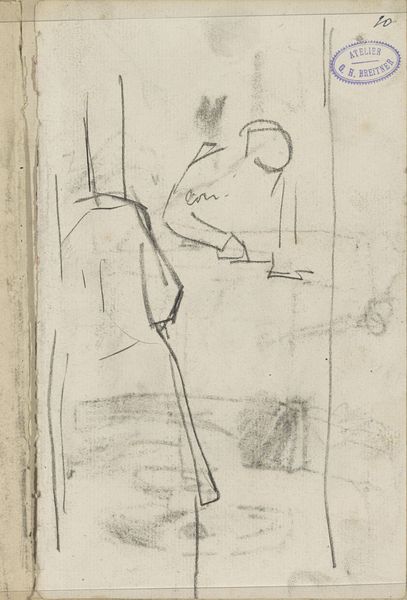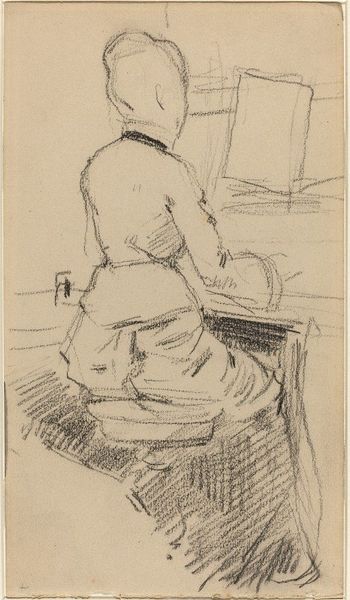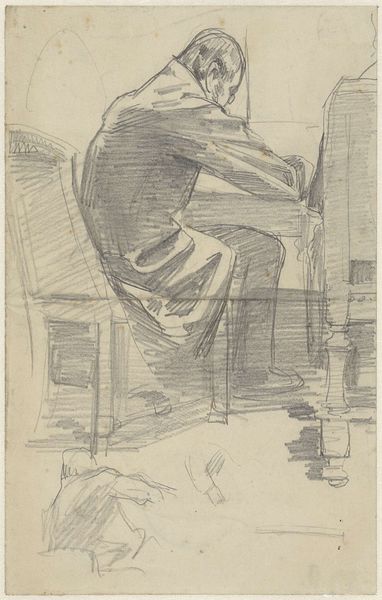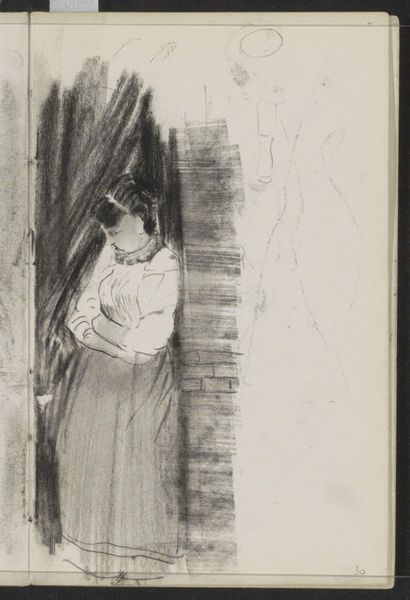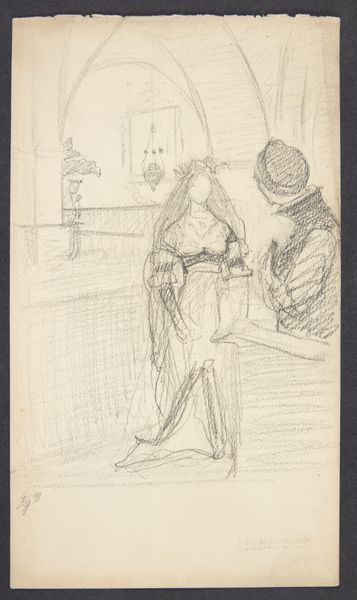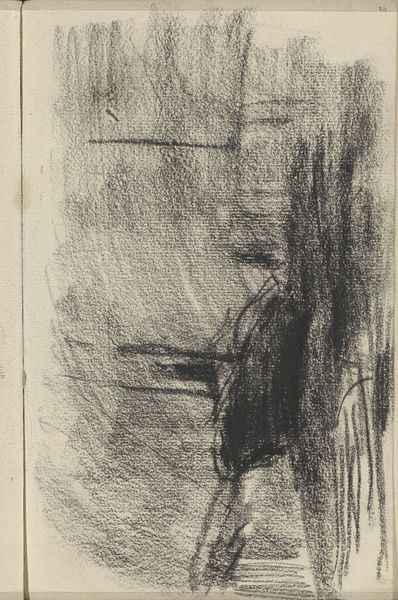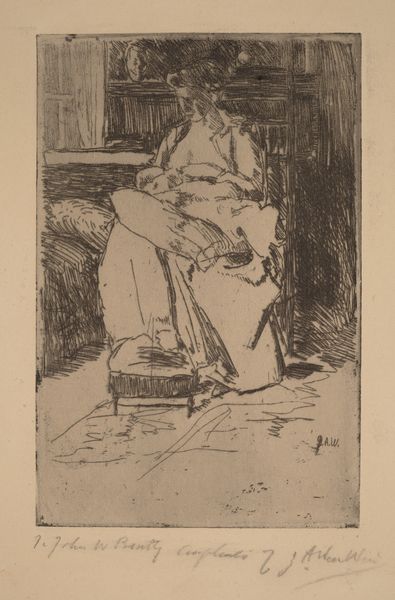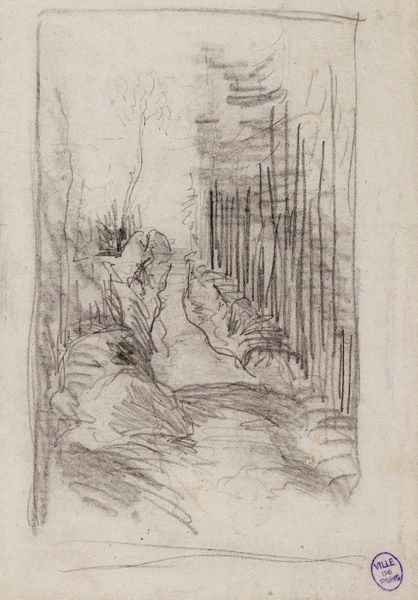
Copyright: Rijks Museum: Open Domain
Editor: This is George Hendrik Breitner's "Two Women in an Interior," a pencil drawing from around 1900-1923. It’s currently housed at the Rijksmuseum. I'm struck by how simple the lines are, yet it still evokes a feeling of quiet intimacy. What do you see in this piece? Curator: It's compelling how Breitner captures a sense of everyday life, isn't it? I'm immediately drawn to the positioning of these figures. Are they equals, or is there a power dynamic at play? Their spatial relationship could invite commentary about the socially constructed roles of women within domestic settings. How do you see their relationship? Editor: I hadn't thought of it that way. They appear to be conversing, but their turned heads suggest a degree of separation, perhaps a hint of social constraint even in a private space. Curator: Exactly. The work also invites us to reflect on the Impressionist movement’s engagement with modernity. Breitner isn’t simply portraying these women; he’s giving us a glimpse into their world, marked by specific societal expectations and limitations. What does the sketch format itself suggest to you about these themes? Editor: Maybe the sketch format signals the fleeting nature of these observations, almost like a stolen moment from ordinary life. Curator: Precisely! It's in these seemingly unremarkable, fleeting moments that we often find powerful reflections of larger social narratives about gender, class, and identity. I wonder, could it be interpreted as resistance against formal, academic portrayals of women? Editor: That's fascinating to consider. It's made me appreciate how much context can be unearthed from such a seemingly simple drawing. Curator: Indeed. By considering the artwork through the lens of social history and feminist thought, we discover the layered complexity in even the simplest of subjects.
Comments
No comments
Be the first to comment and join the conversation on the ultimate creative platform.

